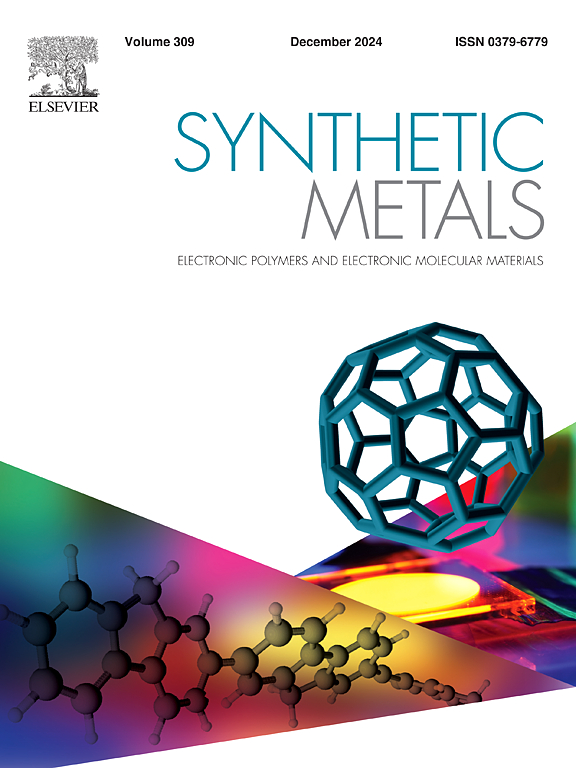热电气凝胶最新进展综述:制造、发电机、海洋采集、传感器和热电偶应用
IF 4
3区 材料科学
Q2 MATERIALS SCIENCE, MULTIDISCIPLINARY
引用次数: 0
摘要
热电气凝胶(TE)作为一类新型的热电材料及其装置最近引起了科学界的关注,因为与传统的热电材料相比,热电气凝胶具有热电材料和气凝胶的双重特点,即集热发电、低密度、高孔隙率、超低导热率、丰富性、经济性和环保性。因此,有机、无机及其混合气凝胶的制造工艺在当今得到了广泛的发展,以获得理想的热电效应气凝胶,并克服其在低优点系数(zT)、可扩展性、机械耐久性、长期稳定性以及柔性和可拉伸热电气凝胶的可靠性等方面的局限性,这些都是当今面临的挑战。这促使研究人员在过去二十年中加大了对热电气凝胶的开发力度,并同时利用新的、理想的模块结构(厚度/表面)和可弯曲特性来实现无法实现的热电模块。因此,本研究不仅从(有机、无机和/或混合)结构、制造方法、TE 功能、影响 TE 功能的关键因素及其相关机制等方面介绍了最新研究成果,还回答了一些重要问题,如为什么气凝胶被认为是一种重要的 TE 材料?另一个问题是:是否有可能在不使用任何添加剂的情况下实现具有高电导率 σ > 100 Scm-1 和低热导率 k < 100 mWmK-1 的聚合物(PEDOT:PSS 和/或其他)气凝胶?还有另一个关键问题:气凝胶能在多大程度上取代传统的 TE 材料?然后,简要介绍了 TE 气凝胶的广泛/多样化应用,如发电机、单传感器、双传感器和/或多功能传感器、物联网(IoT)、热电偶和海洋能量采集。最后,重点介绍了当前面临的挑战以及对未来工作前景的一些初步建议。本文章由计算机程序翻译,如有差异,请以英文原文为准。
A review on the recent progress in thermoelectric aerogels: Fabrications, generators, marine harvesting, sensors, and thermocells applications
Thermoelectric (TE) aerogels, as new class of TE materials, and their devices have recently captured the attention of the scientific community, as they have the features of both TE materials and aerogels in harvesting heat to electricity, low density, high porosity, super-low thermal conductivity, abundance, affordability and being environmentally friendly compared to the traditional TE materials. Therefore, the progress in fabrication processes of organic, inorganic and their hybrid aerogels has been extensively grown nowadays to obtain desirable TE aerogels and overcome their limitations in terms of low figure of merit (zT), scalability, mechanical durability, long-term stability, and reliability of flexible and stretchable thermoelectric aerogels are challenges today. This drives the researchers, in the last two decades, to increase the development of TE aerogels and reach the unobtainable TE modules, with new and desirable modular architectures (thicknesses/surfaces) and bendable features at the same time. Therefore, this study does not only introduce a summary of recent works in terms of their (organic, inorganic, and/or hybrid) structures, fabrication methods, TE functions, and key factors impacting TE functions and their related mechanisms, but it answers some important questions such as: Why is the aerogel considered as an important TE material?. And another question is: Is it possible to achieve a polymeric (PEDOT:PSS and/or others) aerogel with high electrical conductivity σ > 100 Scm−1 and low thermal conductivity k < 100 mWmK−1 without any additives?. And also another pivotal question: To what extent can aerogels replace the traditional TE materials?. Then, the wide range/variety of TE aerogel applications such as generators, single, dual and/or multifunction sensors, internet of things (IoT), thermocells, and ocean (marine) energy harvesting have been briefly described. In conclusions, the highlights on the current challenges and some preliminary proposals for future work perspectives are offered.
求助全文
通过发布文献求助,成功后即可免费获取论文全文。
去求助
来源期刊

Synthetic Metals
工程技术-材料科学:综合
CiteScore
8.30
自引率
4.50%
发文量
189
审稿时长
33 days
期刊介绍:
This journal is an international medium for the rapid publication of original research papers, short communications and subject reviews dealing with research on and applications of electronic polymers and electronic molecular materials including novel carbon architectures. These functional materials have the properties of metals, semiconductors or magnets and are distinguishable from elemental and alloy/binary metals, semiconductors and magnets.
 求助内容:
求助内容: 应助结果提醒方式:
应助结果提醒方式:


